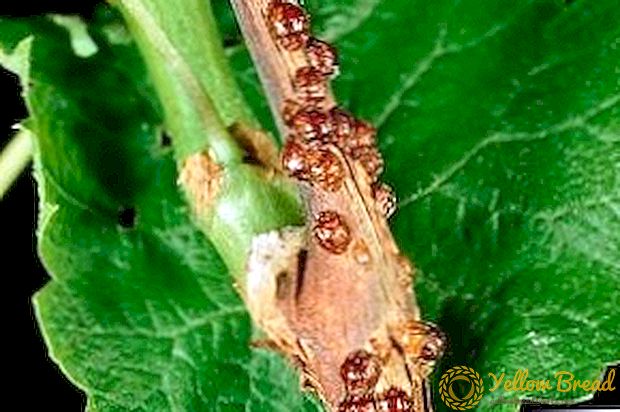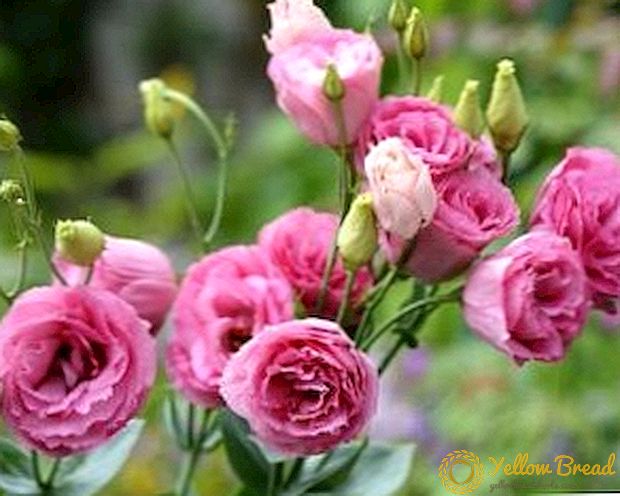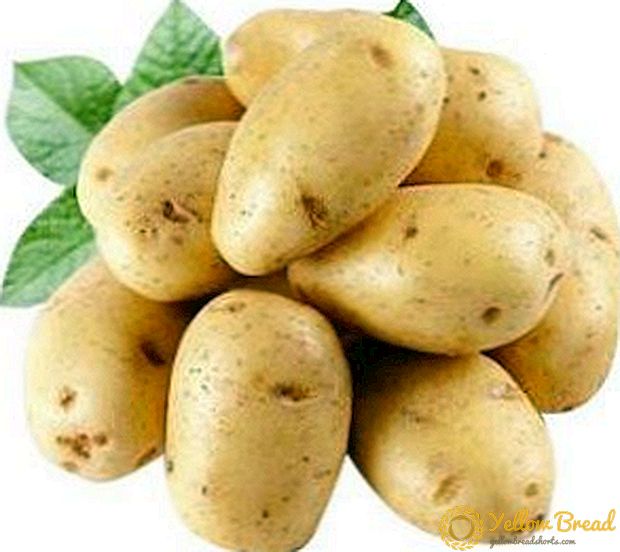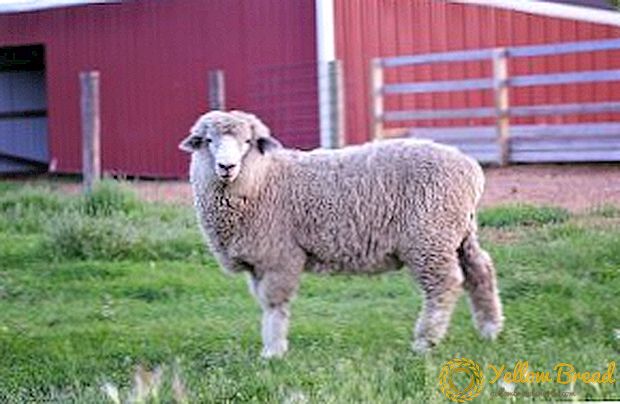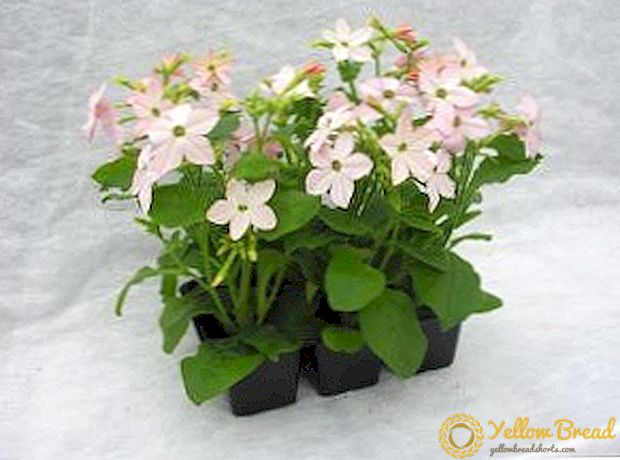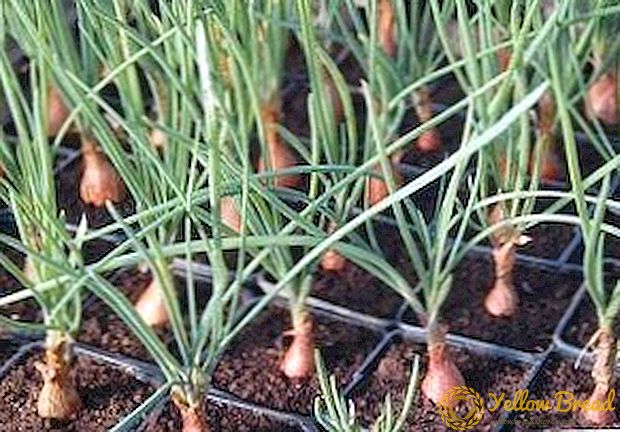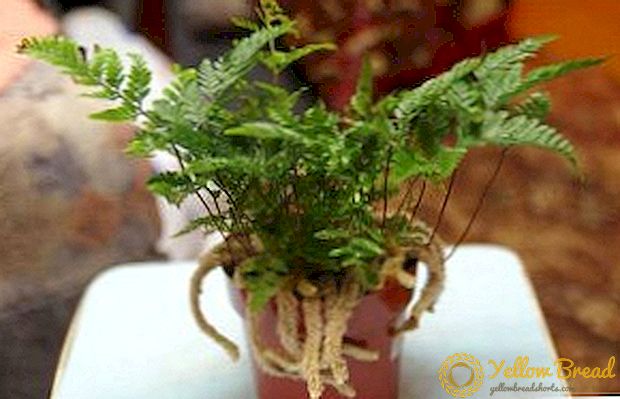 Davallia fern is interesting due to its unusual appearance and mode of growth. When growing at home, except for openwork leaves, bizarre forms of rhizomes resembling hare's legs or shaggy limbs of a spider hang out of a pot.
Davallia fern is interesting due to its unusual appearance and mode of growth. When growing at home, except for openwork leaves, bizarre forms of rhizomes resembling hare's legs or shaggy limbs of a spider hang out of a pot.
It is thanks to such a feature among the people that this fern is called "hare's feet". We present you information about the intricacies of growing this wonderful plant and the specifics of caring for it in room conditions.
- Davalliya: description and types
- What does davally need for successful growth
- Where to place davalliya, the choice of lighting
- Air humidity and temperature for davalia
- Growing soil
- Landing davallya at home
- Spores breeding
- How to plant dawallia division of rhizome
- Features care davalliya at home
- Watering fern
- How to fertilize davallia
- Transplantation
- Major pests and diseases of the room fern
- Possible difficulties in growing davally
Davalliya: description and types
Davallia (Lat. Davallia) got its scientific name from the surname of the Anglo-Swiss botanist Edmund Davall. This is a fast-growing epiphytic herbaceous perennial, which belongs to the genus of the same name, numbering about 40 species. In the wild, it is found in tropical countries in Asia, China, Japan, Polynesia, the Canary Islands and the islands of Fiji, Java.

It has a thick creeping fleshy rhizome, which grows on the soil surface. At the base is covered with scales, densely trimmed with silvery down. Roots-paws can grow in length up to 90 cm.
The fronds of a given fern are predominantly triangular, bright green, small-pointed, dissected, and drooping. Reach a height of 15-20 cm.
Many types of Davallia are grown indoors (greenhouses) and in indoor pots.
In greenhouses, the most frequent inhabitants are Davallia bullata, Davallia pentaphylla, Davallia dissecta, Davallia truncatula, Davallia trichomanoides, Davallia mariesii (Davallia mariciiii)
In indoor conditions, the hare's foot plant is most often grown as an ampelous plant - this is how you can emphasize its exoticism and beauty. It is also used to compose epiphytic compositions.
Among the indoor species the most popular - Canarian Davallia (Davallia canariensis), Davallia bullata Wall, Davallia solida.

What does davally need for successful growth
For the successful cultivation of davallia, it is necessary to carry out the proper fit and care in accordance with its preferences. And you need to start with the choice of a favorable place and lighting.
Where to place davalliya, the choice of lighting
This plant is very light-loving, so the place for its placement must be chosen as light as possible. In this case, the flower should be protected from direct sunlight, in order to avoid burns and yellowing of the leaves.
If a window sill is intended for davalliah, then a window to the east is best suited where the sun will only have access in the morning.
A fern can grow in light shading, but at the same time it will lose some of its decorative qualities and will also grow more slowly.
Perhaps growing plants in artificial light - davalliya feels good under a fluorescent lamp.
Air humidity and temperature for davalia
The hare's feet fern is very picky about the humidity of the air, therefore many of the species of this flower are practically impossible to grow under the conditions of an apartment,since it is impossible to arrange for them the necessary moisture regime. 
And even for the majority of representatives of indoor species the optimal humidity will be the level of 60-70%. Only Davallia Canarian is less demanding on this indicator.
The fern is also picky about temperature - in the summer it feels good at 18-22 ° C, in the winter it prefers rooms with a temperature not higher than 15-18 ºС. It can withstand a decrease in temperature to 13 ºС, but not lower. If the plant is too cold, it will start dropping the leaves. Fern must be protected from drafts.
Growing soil
For the cultivation of these ferns at home, the substrate will be suitable from the composition: leafy humus, peat, sand in equal proportions. It is desirable to add sphagnum, charcoal and a small amount of pine bark to it. Store soil with a mark "for ferns", "for bromilia" is also suitable for planting.
The pot for planting must choose a wide, always with a drainage hole. The bottom of the pot should be covered with good drainage.

Landing davallya at home
Fern breeds in two ways: spores and division of rhizomes.
Spores breeding
This method is quite time-consuming and complex. In addition, not all disputes are able to sprout. On the plant they are combined into sori. After ripening, shake them off with wai and dry in a paper envelope.
Next, prepare the capacity for landing. For this purpose, for example, a plastic container is suitable. Wet peat or moss fall asleep at the bottom. Best of all, if it is sphagnum, which is disinfected before use with boiling water or in the oven (microwave). Spores poured on the surface of peat. The container is closed with a plastic lid, glass or film. For germination capacity is placed on the windowsill.
It is necessary to ensure that the peat is constantly wet. The optimum temperature for seedling development is 20-25 ºС. After a few months, moss forms on the peat, and soon the first leaves will appear. It is necessary to remove them when they grow to a height of 5 cm. The best time to plant a dispute is May.

How to plant dawallia division of rhizome
A simpler breeding method for dawallya - division of rhizomes. This procedure is carried out in April. The rhizome is divided into parts, so that they have one or two leaves.
You can simply put a foot on the surface of the substrate and lightly press it with expanded clay, or make a metal support (for example, from wire) and put the root on the soil horizontally. The soil must be kept in a well-humid state. After about two months, the removed part of the rhizome should give roots.
Features care davalliya at home
Davaliya fern is not too picky, taking care of it at home will not make any special difficulties. Next, we present several recommendations for watering, feeding and transplanting a flower. If they are observed, the plant will for a long time please you with a lush cap of green wai and hairy plexus of paws-roots.

Watering fern
It is recommended to water davallium with warm soft settled water. Having watered the fern loves plentiful, however without fanaticism - it does not transfer an excess of moisture. However, as well as does not tolerate drying of the substrate.
The plant itself will tell when it will require regular watering - the surface of the soil should be slightly dried: up to 5 cm deep. In winter, at temperatures below 18 ºС, the number and volume of irrigation is reduced to one in two or three weeks.
For irrigation, it is better to use a watering can with a narrow spout to prevent water from getting to the roots. Can be watered in a pan.
Also, do not forget to maintain the humidity of the air by daily spraying the plant. In the summer, especially when the temperature in the room exceeds 22 ºС, this procedure is desirable to be carried out twice - in the morning and in the evening. In this case, make sure that it does not coincide in time with direct sunlight on the plant, otherwise the drops on the leaves can cause burns. Spraying, as well as watering, produce a warm settled water.
To increase the humidity, it is also possible to place a pot with fern on a pallet with moistened peat or expanded clay. The periodic shower will not harm the plant - it will help to wash off the dust from the Wai and to moisten the flower well. When carrying out this procedure, the pot must be covered with a film in order to avoid water ingress into it. 
How to fertilize davallia
Feeding up spider fern is recommended in reduced doses (1/3 or 1/4 of the norm indicated on the package) fertilizers for decorative and deciduous crops. Feeding is carried out from April to September once or twice a month. And although the period of rest in this species of fern is not pronounced, in the autumn and winter fertilization is not practiced.
Transplantation
Young davallys transplanted every year. Mature - as far as filling the roots of the pot, preferably once every two to three years. Transplantation is necessary in March or April. Recommended pots to pick wide and low. The soil should be light, loose, well pass air and water. Usually davaliya tolerates the transplant process well.
Major pests and diseases of the room fern
Mistakes in the care of a plant can provoke the development of diseases and pest damage. So, with regular flower flooding and low temperatures, its root can strike gray rot and other fungal diseases.
Low humidity in the room provokes attacks spider mite. Also weakened and poorly maintained plant becomes an object for sabotage. whiteflies, thrips, scutes, aphids. 
At defeat by wreckers leaves at a fern will turn yellow, wither and dry. They need to be cut in time. Parasites, if possible, remove manually. In the event of a serious injury, insecticides cannot do. For processing ferns are suitable "Aktellik", "Aktara", "Karbofos".
Possible difficulties in growing davally
The hare's feet fern, as a rule, takes root well after planting and transplanting, endures the conditions of an apartment while satisfying its basic preferences. However, sometimes it happens that the plant is missing something. Then it will tell you about this change in appearance.
So, dawallya when grown at home can periodically be observed yellowing and drying of the leaves. If you notice a similar change, pay attention to the temperature and humidity in the room - the plant may be hot or dry. You should also carefully examine the flower for the presence of pests.
Drying the tips of the wai and then dropping them speak of insufficient moisture. About the same reason symbolizes the yellowing of leaves at the base. 
Fern leaves turn yellow, curl and fall off - you probably water the plant with too cold water or keep it at low temperatures. Also the cause of such changes may be drafts.
If shrinking and dropping of wai occurs in winterthen this can be a natural process.
The fact that the flower is too much in the sun, he will tell you lethargy and pallor wai. In this case, the pot needs to be slightly pretenite or find another place for it.
The cause of the brown spots there may be sunburns or too hot indoor temperatures.
If the fern dries Soon after the transplant, you should not be scared right away. If you are sure that you follow all the recommendations for fern maintenance and that it is healthy, it is possible that the plant will get used to the new conditions, and it needs some time to adapt. Dry leaves to be pruned. Worry is necessary when, after some time, new fronds do not appear.
Lack of root growth indicates the wrong soil for planting - it is too heavy for the plant.
Stunted plant growth - a sign that he was cramped in a pot or it lacks light.
If you regularly and closely monitor the development of your green pet and in time to eliminate the problems that it signals to you, this original flower can serve as a decoration for your apartment for a long time.

